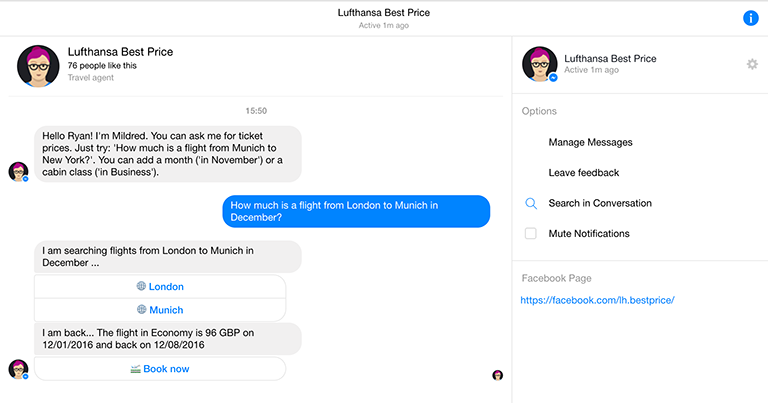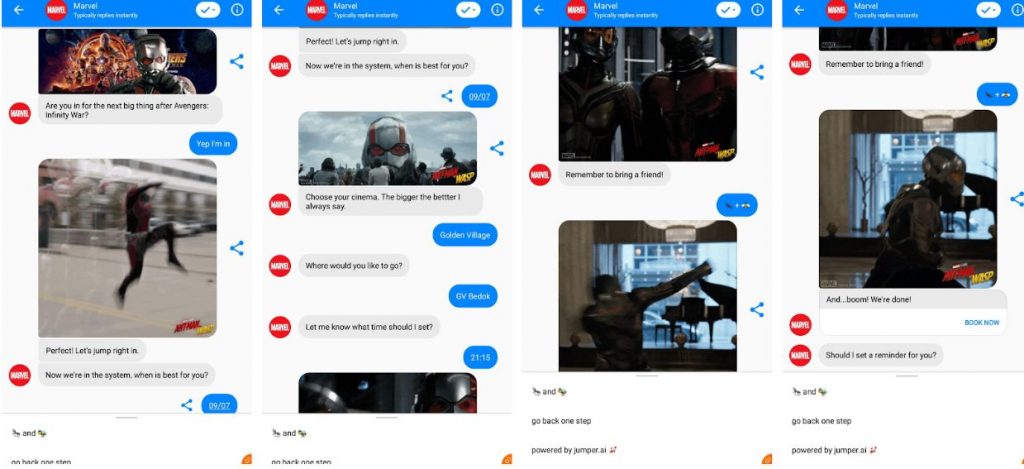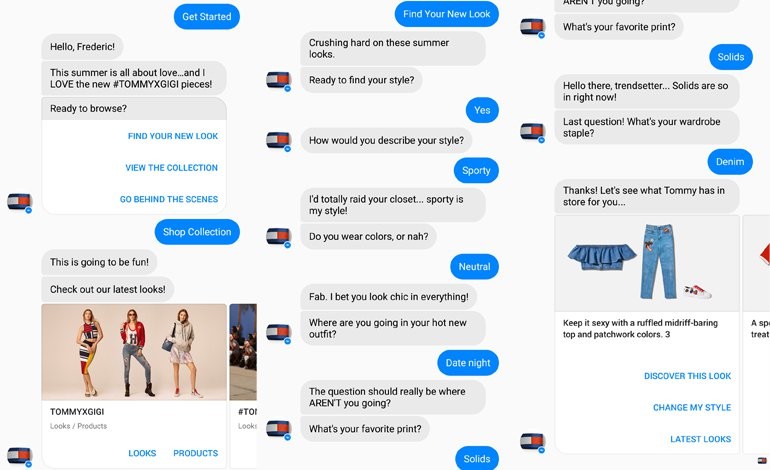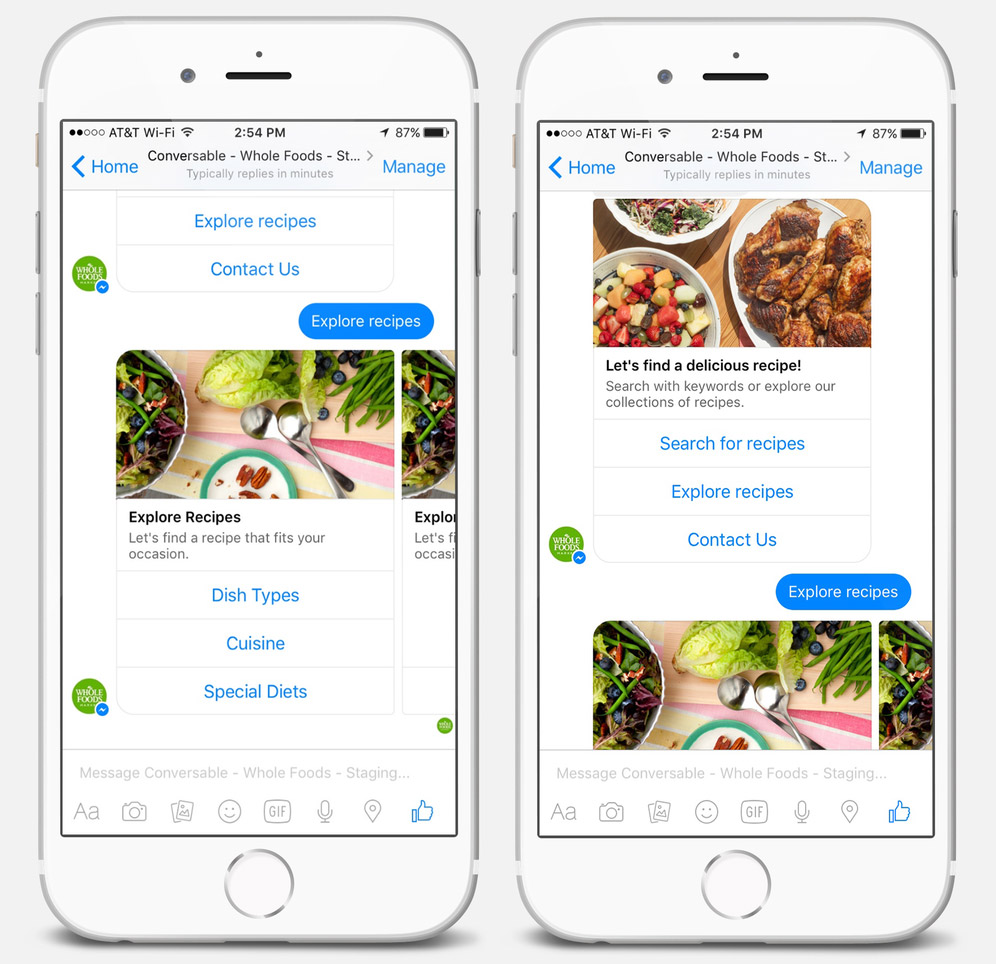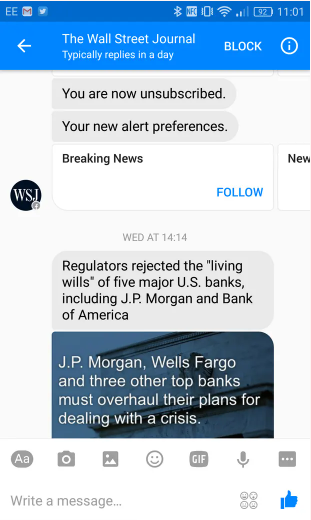Let’s say you want to buy a new laptop and you reach an electronics store to look around the products.
Now imagine entering the store and having to look around all by yourself with no assistance to your queries.
You might not be able to make the best decision to buy that laptop you were looking for. Well, there are high chances that you might leave the store without buying anything at all.
This is exactly what the audience entering your social media platforms needs to move from the stage of delight to the stage of engagement i.e. assistance.
Chatbots can be ‘a road quickly traveled’ for the marketers to engage with the audience whenever and wherever they need.
What are Chatbots?
Chatbots are ‘conversational agents’ built to engage with the audience while adding a human touch to the conversation.
Chatbots are the virtual voice of your company to anyone who engages with the brand and provides the necessary assistance i.e support queries, product information, service descriptions, etc.
Chatbots also enhance the users to talk and know more through chat mediums on various platforms i.e websites, social media, SMS, etc.
Chatbots with their extensive uses are now adding more value to social media platforms of businesses if used in the right way.
While chatbots can be programmed in a way where it can respond to certain keywords or tone of speech, it continues to assist potential customers and reduce the time on the sales cycle.
Why use Chatbots in Social Media Marketing?
Chatbots in Social Media Marketing is a potential medium to increase engagement and have surely gained thrust over the fraction of time.
Aren’t all businesses on social media trying to level up their game in every way possible?
These user-friendly chatbots can catalyze that process by directly engaging with the potential customer and increasing the chance of conversions.
Trends showed over the last five years, search volume revolving around chatbots grew 19x as individuals and businesses began to realize their value.
Facebook recently released a host of data by imparting the merits of chatbots for businesses:
- 2 billion messages are sent between people and businesses monthly.
- 56% of people would rather message than call customer service.
- 53% of people are more likely to shop with businesses they can message.

Chatbots are no less than a jackpot for social media marketers to initiate a personal and one-on-one conversation with the audience.
Considering that there were over 300,000 chatbots on Facebook in 2018, we can be certain of the underlying potential of chatbots in 2020 and ahead.
PRO FACT:
More than 80% of small businesses in India and Brazil say WhatsApp helps them improve customer service and grow business.
How to get started with Chatbots in your Social Media Marketing?
1. Define your social media goal
Let’s say it’s getting difficult to respond to each query on social media or the conversion rate has been decreasing over time. A chatbot can help you to keep a straight eye towards your social media goals while responding to each query in a short time.
2. Choose relevant platforms
Your chatbot requirement and type of conversations may differ from platform to platform. Consider the options and make the right choice for your business:
- Facebook Messenger
- Twitter Direct Message
3. Develop your bot’s personality
Your chatbot is the front face of your business and you might want to make sure that the first interaction of a potential customer has to represent the best of your business.
You might consider naming your chatbot or giving it a voice to make it more human-like.
4. Get creative with your opening message
Even if the user knows that he/she is talking to a robot doesn’t mean it has to sound like one. Your business chatbot has to be captivating and has to ask questions often for it to become a two-sided conversation.
Hipmunk’s basic yet useful chatbot uses the visitor’s location to take out all the cluttered work. Now, the user doesn’t have to hunt for data on various websites as the chatbot has given them the information by putting it right in the Messenger app.
5. Add visual components & CTA buttons
We all know how conversations become more interesting with visuals, GIFs, infographics, and videos. Be interactive with your customer and make them feel like you care about them.
Chatbots are known for increased conversion rates as the presentation of your business becomes customized from person to person. Just like Shop Spring, a ‘Call to action’ kept the user engaged and eventually offered customized collections.
6. Test your conversations
There is a thin line between a chatbot solving a problem and a chatbot complexing the situation.
To make sure of having a suitable solution or reaction to all kinds of queries and messages, it’s necessary for you to test your chatbot with every possible question.
7. Map the customer’s journey
After you make your chatbot live, that’s when the actual game of marketing analysis begins.
Monitor each step of the audience including what made them make a purchase or what made them leave the chatbot.
6 common mistakes to avoid while using Chatbots in your Social Media Marketing
1. Executing without a strategy
Before laying your hands on using chatbots for your social media, a well-planned strategy to look forward to is a must.
Your chatbot marketing strategy must answer questions to ‘what, where, why, and how’ for your business.
Once you have a well-thought chatbot marketing plan, it should make sure to satisfy your business targets.
While brands out there are already trying to make the most out of chatbots on social media platforms, here is how Tommy Hilfiger introduced this feature during the New York Fashion Week.
This stands to be an example of a strategy with a vision.
2. Spammy, pushy bots
Finding the right balance between increasing customer engagement and trying too hard for it can be vital for chatbot marketing.
A user can easily fade away with messages or reminders that overwhelms them. A bunch of promotional messages can do that.
By not poking the user too much, a chatbot can always send a reminder if they left the conversation halfway with possible solutions but only for a limited amount of time.
Such push messages can actually frustrate the user and they might never come back after such an experience.
3. Bots with no personality
Bots that have a character tend to engage in more honest conversations from the customer’s side.
Give your bot a name, develop its characteristics, and make it engaging enough for a customer to be there throughout.
Create a chatbot that suits best to your business and then send it to work.
Take that extra mile to give a more human touch to the conversations between the chatbot and the customers. This can end up in an increased conversion rate as the customers now have somebody they can relate to while they make a purchasing decision.
Swelly makes it easier for humans to engage in a conversation and attain the required assistance.
4. Insufficient details
Users connect to chatbots for assistance on their purchasing decision, product query, etc which is always specific.
With the specific queries of the user, the bot needs to have a proper set of information to guide the user towards a solution.
Irrelevant information or insufficient details majorly lead users to leave the conversation halfway and makes an impression less wanted.
When a chatbot gives enough information and lets the user make a choice, it can keep your audience more engaged than usual.
5. Not letting the user say ‘NO’
In a conversation with a potential customer, the bot instead of just trying to engage with the customer should also give freedom of taking a break or departing from the conversation.
Overwhelming the customer by trying too hard can come off as caging them to make a purchasing decision. And that can lead to no good for the company.
Letting the user say no can actually make them believe more in the idea of easy engagement with the company.
Such situations where chatbots don’t allow the user to make a choice can easily push them over the edge.
6. Lack of testing
With a number of possibilities when having a conversation with customers, what is most important for you is to test the chatbot several times before executing it.
When conversations are happening in real-time with real-customers, the chances of the conversation going to a dead-end are high. To avoid predictable glitches, repetitive testing is the only way out to an optimum bot solution.
Working on enough permutations and combinations of a conversation can lead to a better user experience.
Conclusion:
Well, we are surrounded by a lot of chatbots on social media, and businesses are now using it as a tool to increase conversion rates.
But are the chatbots really contributing to your business or rather taking away potential customers?
The more your business tries to get into their buyer persona’s shoes, the fewer mistakes it will make.
This might come at the cost of going back and forth but it’s going to feel worth it once you start seeing more customers engaging with the chatbot.



